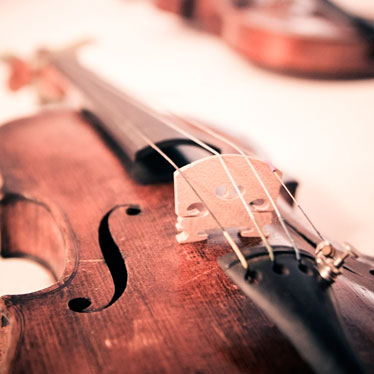Which Violins Offer The Best Value For The Price?

Although there are plenty of instruments on the market, when you’re searching for a great violin and you want the best value for your heard-earned dollar, finding a combination that merges excellent quality with an affordable price can be challenging.
While it’s true that violinists each have their own preferences for certain characteristics, beginners to the art must choose wisely when purchasing their first violin. The craftsmanship and materials have such a deliberate influence on the tone and how easy (or difficult) it is to play that it’s really worth your efforts to spend some time learning about what determines the price of a violin, and how violins are made.
Since there are a variety of models available for under the $2500 price, to understand what makes a violin a good value, you need to know two specific factors: What characteristics to look for at a particular playing level, and how much it should cost for those features. By examining the characteristics and costs, you can get a good idea of the best value for the price.
Beginner Violins
Student violins are created to introduce the most basic level of music education for beginners. However, unless you are looking at fractional sizes less than a full size (4/4) or ¾, you should choose a violin that will reasonably offer many years of playability.
Beginner instruments typically feature fine tuners that make it easier for new players to tune their strings, and many are sold in outfits that include a hard case, a bow, and rosin to get you started. Indeed, buying these items separately at first can be challenging, so it’s often easier for students to search for a great violin that is included in an outfit.
Quality violins are crafted from wood, either in a manufactured setting or (more traditionally) an instrument at a time by a Luthier (specialized stringed instrument craftsman); however, most Luthiers make advanced level violins.
Beginner model violins are generally created with precision manufacturing techniques, but the best quality is produced when a combination of meticulous production and hand processes during the fitting out step are employed. In some cases, the violin is basically assembled (major pieces, joints, etc.) in a factory, and then the violin is shipped to a Luthier who completes the final soundpost adjustments, string and bridge installation and other final steps involved to create a playable violin.
Key features to look for:
- Spruce wood table (top) and maple wood sides, back and scroll
- Ebony wood pegs, fingerboard, and chin rest
- Detailed scroll work (deep and ascetically pleasing)
- Bridge that is seated without any gaps, and with a height that is even for all strings for good “action”
- Uniform symmetry from the tip of the scroll to the nut (equal proportions on both sides)
Some other things that offer the best value for the price include high quality strings and a responsive carbon-fiber composite bow.
Intermediate and Advanced Level Violins
Again, the same types of construction features that make quality beginner violins are included in intermediate instruments. The difference here will be the quality of the spruce, maple, and other tone woods used to fashion the violin.
Exclusive woods—those that have been aged for a longer period of time and that feature more “flaming” in the appearance—offer a more delicate tonal quality for improved pitch and sound differentiation and also have better projection characteristics; so you can achieve richer, fuller sound and are able to perform more advanced bowing and playing techniques. Moreover, the same workmanship guidelines help to classify the cost of the violin.
Intermediate violins are offered in ranges of $750-$1200+ but the superior, long-lasting performance of these instruments offer a great value for advancing students, allowing them to refine their abilities with a violin that matches their capacity.
Brands such as Revelle offer affordable beginner (outfits start at $500) and intermediate violins that are very superior in tonal quality and performance for the price. Similar models typically cost 20-30% more than this new Brand that is combining quality craftsmanship and materials to create valuable instruments that offer the ease of playability with the performance of a much more expensive violin.
Professional violins are typically crafted by hand, one-at-a-time, so each violin is truly an artisan object that takes many months to complete. By the time your student is ready for this violin, you’ll know exactly what to look for and how much to pay.
And, with a little judicious practice, diligence, and commitment, anyone can progress and become and advanced violinist. Indeed, playing the violin offers a lifetime of personal enjoyment.


